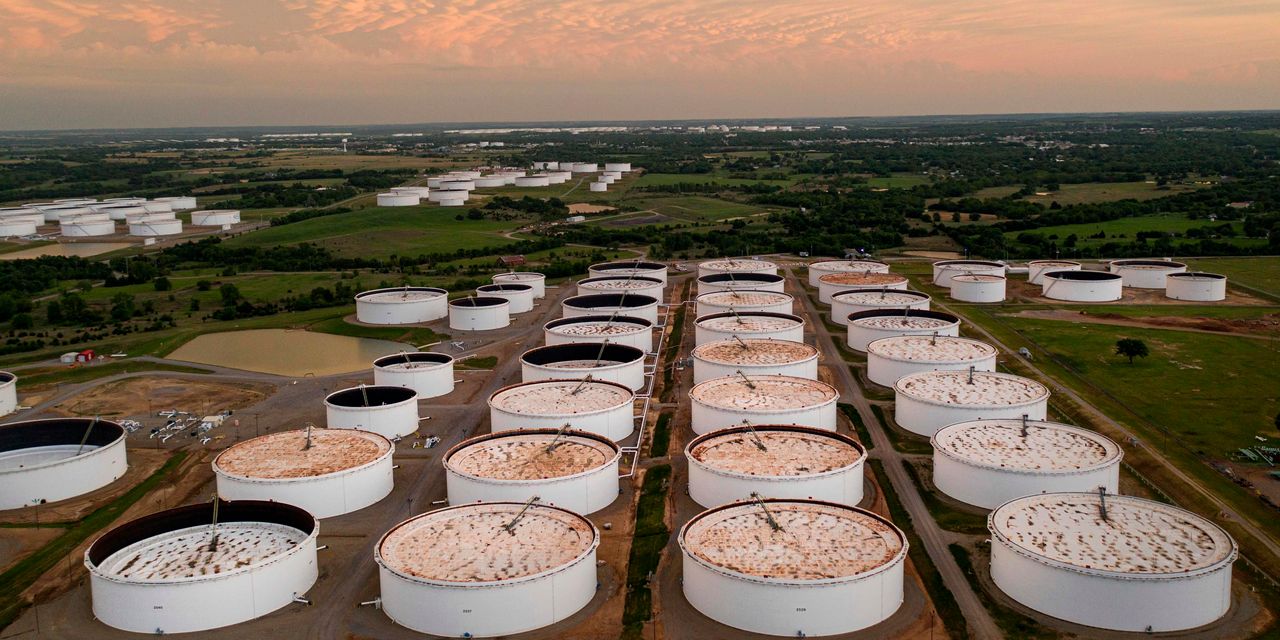Oil futures bounced Wednesday, finding support as industry data showed a fall in U.S. supplies and as traders debated the impact of the Biden administration’s plan to release more crude from the Strategic Petroleum Reserve.
Price action
-
West Texas Intermediate crude for November delivery
CL.1,
+0.97% CLX22,
+0.97%
rose $1.07, or 1.3%, to $83.89 a barrel on the New York Mercantile Exchange. December WTI
CL00,
+0.82% CLZ22,
+0.82% ,
the most actively traded contract, rose 92 cents, or 1.1%, to $82.99 a barrel. -
December Brent crude
BRN00,
+0.49% BRNZ22,
+0.49% ,
the global benchmark, was up 71 cents, or 0.8%, at $90.74 a barrel on ICE Futures Europe. -
Back on Nymex, November gasoline
RBX22,
+0.72%
rose 0.8% to $2.572 a gallon, while November heating oil
HOX22,
-3.46%
shed 1.7% to $3.926 a gallon. -
November natural gas
NGX22,
-0.82%
fell 0.7% to $5.706 per million British thermal units.
Market drivers
Oil futures were attempting to snap a three-day losing streak, with losses on Tuesday attributed in part to expectations that had been building around a release of further crude from the Strategic Petroleum Reserve by the Biden administration.
Administration officials late Tuesday confirmed that President Joe Biden on Wednesday would announce the release of 15 million barrels of oil from the U.S. strategic reserve Wednesday as part of a response to recent production cuts announced by OPEC+ nations, and he will say more oil sales are possible this winter, as his administration rushes to be seen as pulling out all the stops ahead of next month’s midterm elections. The move will complete the release of 180 million barrels of crude announced by Biden in March.
Read: Why you can’t count on another SPR oil release to cut gasoline prices at the pump
“Brent was down around 10% from just over a week ago at one stage on Tuesday; a sign of how concerned traders are about the economic outlook and how serious the Biden administration is about using the SPR to drive prices lower ahead of the midterms,” said Craig Erlam, senior market analyst at Oanda, in a note.
With Brent stabilizing around $90 and WTI between $80 and $85, you have to wonder how OPEC+ countries will feel about how the markets are positioned and whether further cuts could be considered,” he wrote.
However, crude found support after the American Petroleum Institute, an industry trade group, late Tuesday said U.S. crude inventories fell by 1.27 million barrels last week, according to a source who cited the figures. API also reported a 1.09 million barrel fall in distillate stocks, while unleaded supplies were down 2.17 million barrels, the source said.
Official data from the Energy Information Administration is due Wednesday morning. It’s expected to show U.S. crude inventories fell by 1.2 million barrels, according to a survey of analysts by S&P Global Commodity Insight. Gasoline stocks were seen down 2.2 million barrels, with distillates expected to fall by 2.5 million barrels.
